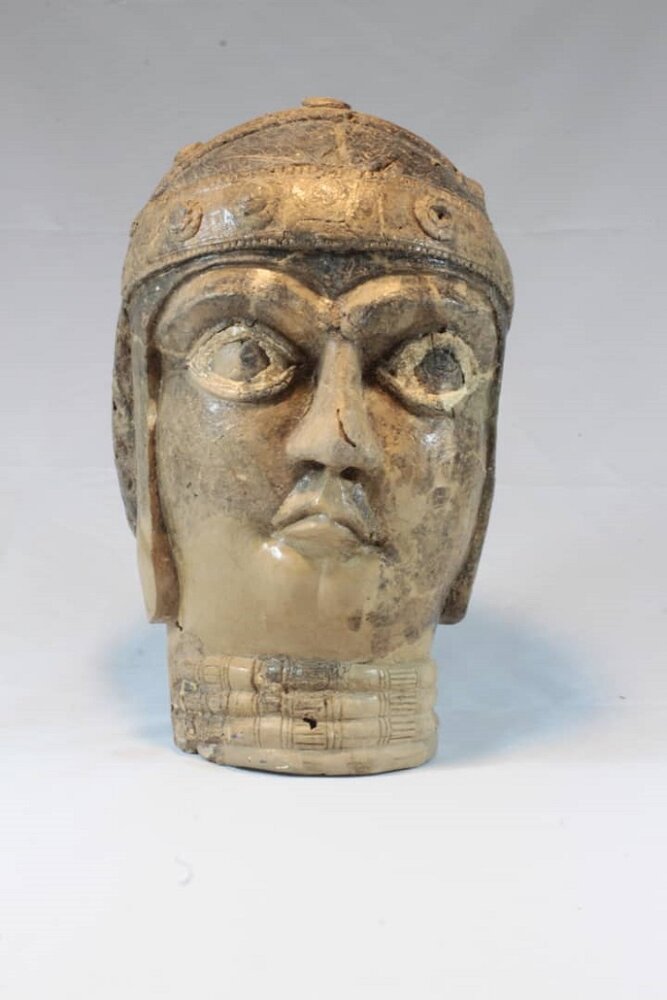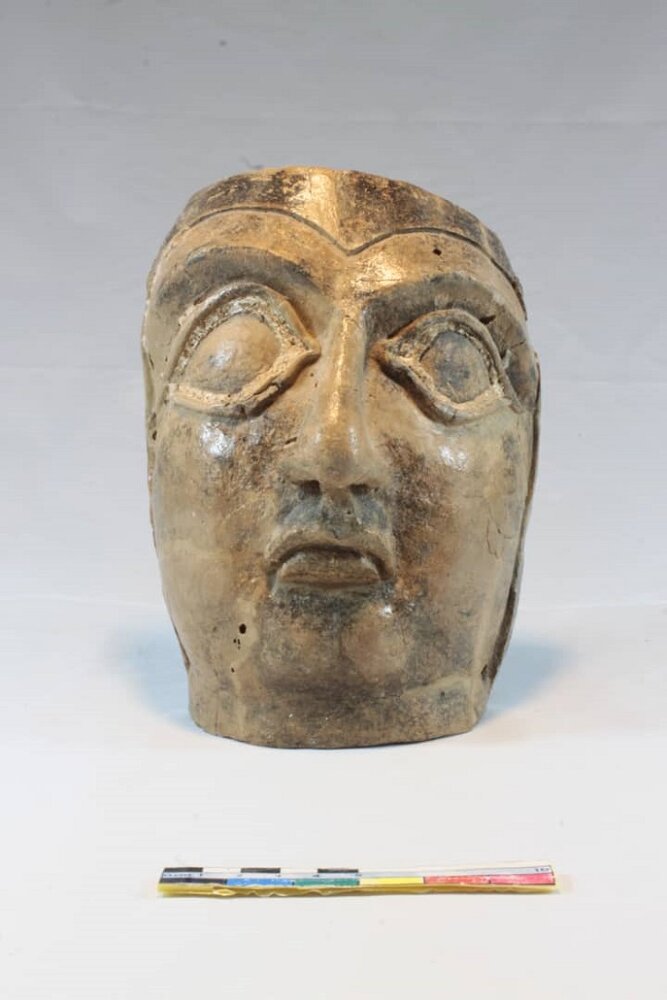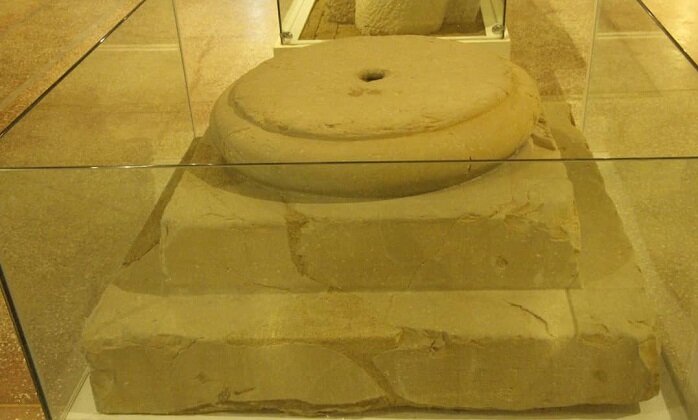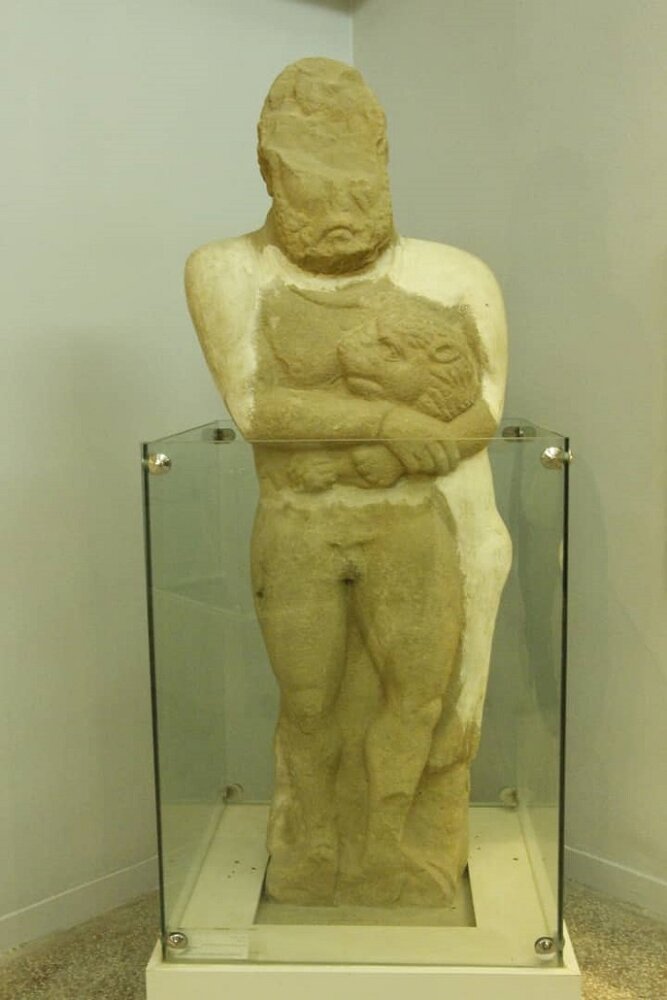Prehistorical clay heads, griffin, earthen mask added Iran national heritage list

TEHRAN – A total of eleven prehistorical works of art, including clay heads, a griffin, and an earthen mask unearthed years ago in Iran’s Khuzestan province, have recently been inscribed on the national heritage list.
The objects include a clay head of a man, clay head of a woman, clay tablet, earthen mask, and an earthenware with human face, all of which had been excavated in Haft-Tepe (Haft-Tappeh), according to the Ministry of Cultural Heritage, Tourism and Handicrafts.
The new entrees also contain a trilingual column base, an Achaemenid column base with Greek inscription, a Parthian statue of a lady bearing Pahlavi inscription, and a stone statue depicting Hercules, which have been unearthed from the UNESCO-registered Susa.

An Elamite relief depicting a family scene, and a griffin made of stone, which have been recovered during excavations at the UNESCO-registered Tchogha Zanbil were also added to the prestigious list.
The objects have been put on show at various museums across the southwestern oil-rich province which, embraces three World Heritage sites: Susa, Tchogha Zanbil, and Shushtar Hydraulic System.

The magnificent ruins of Tchogha Zanbil is considered by many the finest surviving example of the Elamite architecture in the globe. It was made a UNESCO site in 1979. Its construction started in c. 1250 BC upon the order of the Elamite king Untash-Napirisha (1275-1240 BC) as the religious center of Elam dedicated to the Elamite divinities Inshushinak and Napirisha.
The ziggurat overlooks the ancient city of Susa (near modern Shush) in Khuzestan Province. Reaching a total height of some 25m, the ziggurat was used to be surmounted by a temple and estimated to hit 52m during its heyday. UNESCO says that Tchogha Zanbil is the largest ziggurat outside of Mesopotamia and the best preserved of this type of stepped pyramidal monument. Tchogha Zanbil was excavated in six seasons between 1951 and 1961 by Roman Ghirshman, a Russian-born French archeologist who specialized in ancient Iran.

The World Heritage also includes Haft-Tappeh (literary meaning “Seven Mounds”), which is located 15 kilometers to the south of the ancient city of Susa. Early excavations in Haft-Tappeh conducted by the late Iranian archaeologist Dr. Ezzatollah Negahban yielded a large number of petroglyphs bearing cuneiform inscriptions in Akkadian, belonging to Elamite kings. The petroglyphs contain information on the religious beliefs, trading methods, and the political, cultural, and social relations of the time.
Susa was one of the city-states of ancient Elam (2700 – 539 BC), which later became a winter capital of the Persian Achaemenid kings, who ruled Iran from c. 550 to 330 BC. Elam was an ancient country in southwestern Iran approximately equivalent to the modern region of Khuzestan province.

Part of Susa is still inhabited as Shush on a strip of land between the rivers Shaour (a tributary of the Karkheh) and Dez. Archaeological evidence suggests that Susa has been continuously inhabited since 4,200 BC placing it among the oldest continuously inhabited cities in the world. Also, there are traces at Susa of a village inhabited around 7,000 BC and painted pottery dating from ca. 5,000 BC at the site.
The archaeological site includes the ruins of the Achaemenid palace complex of Darius I, the Great, and is located on a fifteen meter high artificial raised 100-hectare terrace. It has suffered greatly in the past seventy years. Susa became part of the Persian Empire under Cyrus II, the Great in 538 or 539 BC. During the balance of the Achaemenian period (to 330 BC), Susa functioned as one of the rotating capitals (a winter capital) of the Achaemenian Kings.

It is said that Alexander of Macedonia captured Susa in 330 BC and plundered the city, seizing some 40,000 talents of gold and silver from the treasury. According to UNESCO, “the excavated architectural monuments include administrative, residential, and palatial structures” and the site contains several layers of urban settlement dating from the 5th millennium BC through the 13th century CE.
During the Sasanian age, the city had a large Christian community. It was sacked by the Sasanian king Shapur II, who transferred the population to Iwan-e Karkheh, but Susa was sufficiently recovered in the early seventh century to fight against the Arabs, who nevertheless captured the city which remained important until the thirteenth century CE.

Different archaeological seasons in Susa have yielded ample relics including pottery, arms, ornamental objects, metalwork, bronze articles, as well as clay tablets. Susa is also a gateway to several worthy destinations such as the UNESCO-tagged ziggurat of Tchogha Zanbil, the ruins of Achaemenid Apadana Castle, Shush Castle (Akropol), Prophet Danial Shrine, Museum of Susa, the archaeological mount of Haft Tapeh.
AFM/
Comments